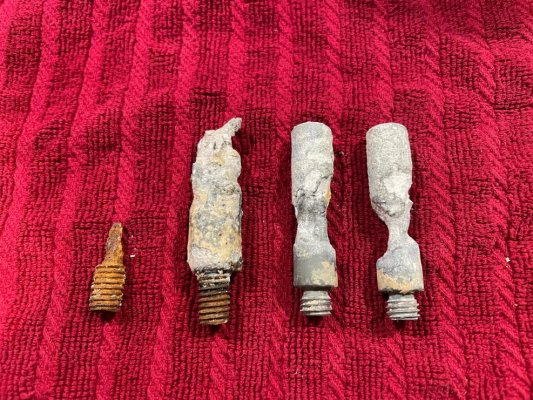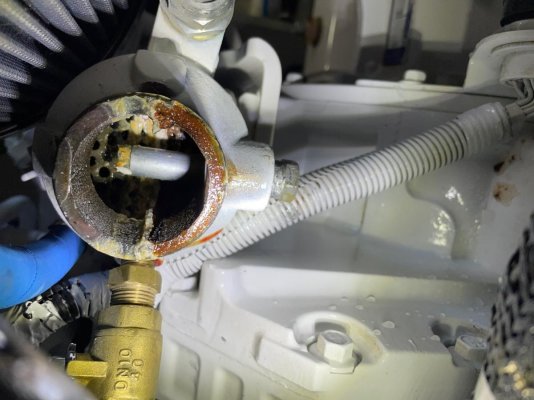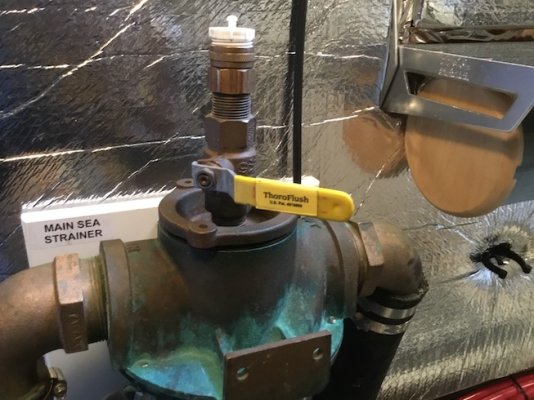magna 6882
Guru
- Joined
- Apr 20, 2020
- Messages
- 697
- Location
- USA
- Vessel Name
- Intrepid
- Vessel Make
- North Pacific/ NP-45 Hull 10
Hello all
First time with the zincs. I have been watching one that was on top and easy to get at(number two in the picture) and it seemed to be looking ok so i assumed the others were wearing at the same rate. Its at a year so i decided to replace them all. The first one is at the fresh water to the aftercooler the send is at the back end of after cooler on top the 3rd and 4th are from the exhaust. Do you think the first totally dissolved or is there a piece of zinc still inside and if so is that going to be a problem or will it dissolve ? Also do some zincs wear at different rates? looks like a year is to long.
First time with the zincs. I have been watching one that was on top and easy to get at(number two in the picture) and it seemed to be looking ok so i assumed the others were wearing at the same rate. Its at a year so i decided to replace them all. The first one is at the fresh water to the aftercooler the send is at the back end of after cooler on top the 3rd and 4th are from the exhaust. Do you think the first totally dissolved or is there a piece of zinc still inside and if so is that going to be a problem or will it dissolve ? Also do some zincs wear at different rates? looks like a year is to long.





